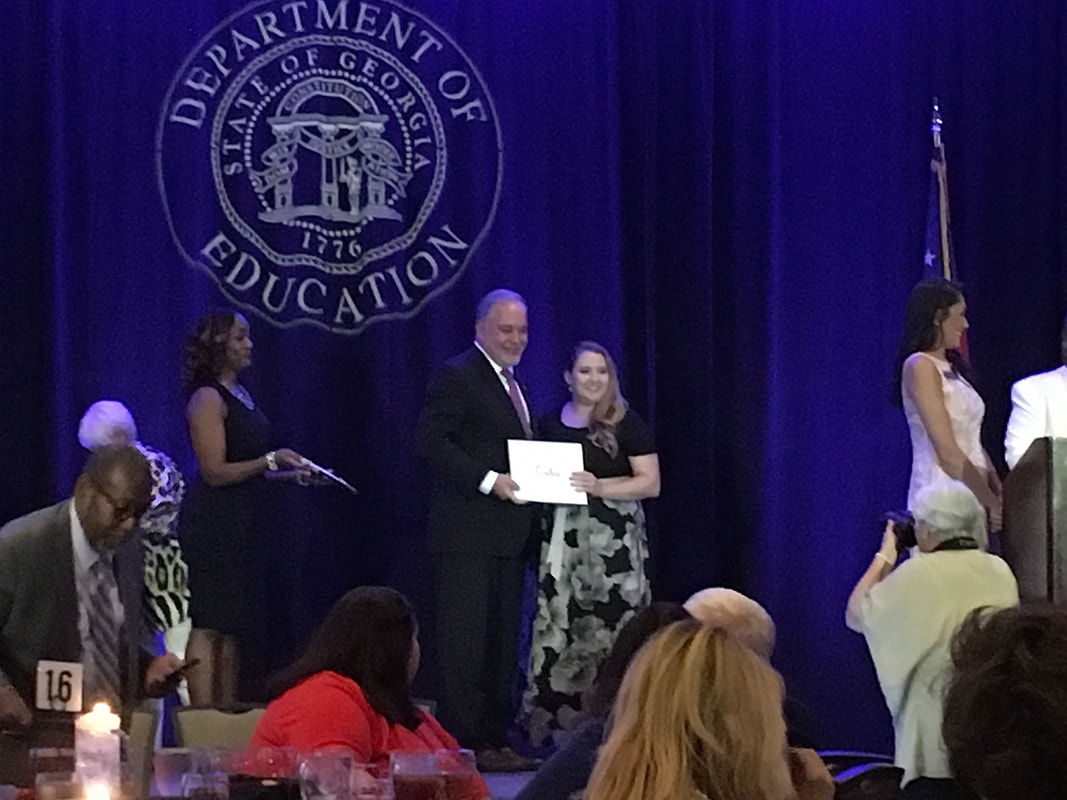|
Over the next few days, I’ll be sharing some of my answers from the 2018-2019 Georgia Teacher of the Year Candidate Application (I didn’t win Georgia, but I enjoyed representing my county as the district-wide winner!). Although I’m no longer in the public school classroom, I enjoy continued learning in the field of education, specifically that of Visual Arts and how I can apply methods in my personal studio lessons.
I also believe that the ideas presented in this post are applicable beyond classroom walls. Question: As a 2018 Georgia Teacher of the Year Candidate, you serve as a spokesperson and representative for teachers and students. What is your message? What will you communicate to your profession and to the public? My message to educators in general would be this: teach for minds AND souls. Make your class the reason students get out of bed and come to school. Reflect on the hardest day of your own life as a student, and be the teacher you needed on that day. Maybe you had just lost a parent. Or perhaps you tore a ligament and had to be benched for the basketball season. The world did not stop turning simply because you were experiencing a difficult situation. You were still expected to come to school, complete homework, and perform well on tests that would most likely determine some of your future. It’s no different for our students. I’m not suggesting that it is acceptable for students to use their situations as habitual excuses to not apply themselves. What I am talking about is showing grace and offering enjoyable, restorative lessons that nourish students intellectually, emotionally, and socially. In addition, do not be afraid to show honest emotion around your students. When I was little, I remember thinking that my teachers slept on cots in their classrooms at night, had no families, and existed simply to be examples of the model citizen. My perceptions changed the day I saw a tear roll down my teacher's cheek while she read a story that reminded her of a loved one who had passed away. At that moment, I realized educators are human. They have families, hobbies, and emotions. My level of responsiveness and respect for teachers soared that day. So, in your own classroom, demonstrate healthy coping skills when you are going through your own trials. Model how determination, participation, and passion can heal and encourage people to thrive in the midst of tribulation, instead of just survive. We don’t always know what situations students are experiencing and the emotional turbulence they are going through, but showing sympathy and empathy in these circumstances may be the reason a student chooses to keep going. Again, I think that an intellectual mind paired with a troubled soul is a setup for compromised potential. Within your classroom, facilitate not only an environment conducive to academics, but also one that supports the emotional well-being of your students. A warm, nurturing environment that integrates student-led activities and expression is not exclusive to art class, and can be employed with any subject matter and across various curriculum. Why not use origami to teach abstract geometrical concepts that some students may not grasp easily? Get out of the classroom and onto a stage when studying Shakespearean literature. Immerse your students into the culture of the Incan Empire with a Google Earth tour. Become aware of how enjoyable and impactful your lesson, regardless of what subject you teach, could be for that student who may have stayed up all night taking care of her siblings, or for a child who did not have any dinner the night before. For art educators specifically, you have an innate gift, and an obligation to share that gift. Yes, teach art history, teach about the great masters, color theory and the elements and principles of art, but don’t forget one of the main aspects that makes a piece of art so powerful, and that is emotional connection. Give your students time to connect with their feelings and mental status. Facilitate opportunities for them to use colors, shapes, and images to express themselves where words cannot. Be warm, kind and supportive. Be an advocate for art therapy, mental health, and the counseling resources available to your students. In addition, offer your professional expertise and the talents of your students to people outside of your classroom. Share the joy of art on a larger scale by hosting school-wide artistic activities and initiatives. Celebrate student success with community exhibitions, social media presence, cross-curricular projects. To the public and community members, you all are an affirmation that hard work pays off. You are examples of successful artists, engineers, musicians, mathematicians, and historians who make a living using your passions. Your support means the world to students, and for that I thank you.
0 Comments
Leave a Reply. |
AuthorArt business owner journaling about my artistic adventures. Archives
August 2023
Categories |
© COPYRIGHT 2022. ALL RIGHTS RESERVED.


 RSS Feed
RSS Feed